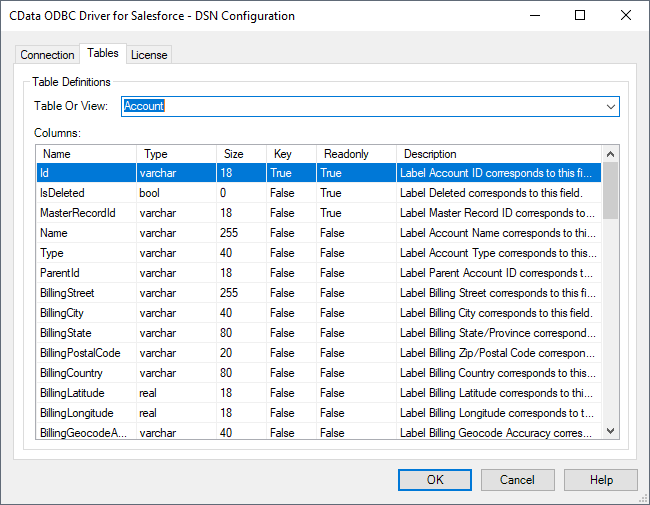Model Context Protocol (MCP) finally gives AI models a way to access the business data needed to make them really useful at work. CData MCP Servers have the depth and performance to make sure AI has access to all of the answers.
Try them now for free →How to connect PolyBase to Veeva Vault
Use CData drivers and PolyBase to create an external data source in SQL Server 2019 with access to live Veeva Vault data.
PolyBase for SQL Server allows you to query external data by using the same Transact-SQL syntax used to query a database table. When paired with the CData ODBC Driver for Veeva, you get access to your Veeva Vault data directly alongside your SQL Server data. This article describes creating an external data source and external tables to grant access to live Veeva Vault data using T-SQL queries.
NOTE: PolyBase is only available on SQL Server 19 and above, and only for Standard SQL Server.
The CData ODBC drivers offer unmatched performance for interacting with live Veeva Vault data using PolyBase due to optimized data processing built into the driver. When you issue complex SQL queries from SQL Server to Veeva Vault, the driver pushes down supported SQL operations, like filters and aggregations, directly to Veeva Vault and utilizes the embedded SQL engine to process unsupported operations (often SQL functions and JOIN operations) client-side. And with PolyBase, you can also join SQL Server data with Veeva Vault data, using a single query to pull data from distributed sources.
Connect to Veeva Vault
If you have not already, first specify connection properties in an ODBC DSN (data source name). This is the last step of the driver installation. You can use the Microsoft ODBC Data Source Administrator to create and configure ODBC DSNs. To create an external data source in SQL Server using PolyBase, configure a System DSN (CData Veeva Vault Sys is created automatically).
You are ready to connect after specifying the following connection properties:
- Url: The host you see in the URL after you login to your account. For example: https://my-veeva-domain.veevavault.com
- User: The username you use to login to your account.
- Password: The password you use to login to your account.
Click "Test Connection" to ensure that the DSN is connected to Veeva Vault properly. Navigate to the Tables tab to review the table definitions for Veeva Vault.
Create an External Data Source for Veeva Vault Data
After configuring the connection, you need to create a master encryption key and a credential database for the external data source.
Creating a Master Encryption Key
Execute the following SQL command to create a new master key, 'ENCRYPTION,' to encrypt the credentials for the external data source.
CREATE MASTER KEY ENCRYPTION BY PASSWORD = 'password';
Creating a Credential Database
Execute the following SQL command to create credentials for the external data source connected to Veeva Vault data.
NOTE: IDENTITY and SECRET correspond with the User and Password properties for Veeva Vault.
CREATE DATABASE SCOPED CREDENTIAL veevavault_creds WITH IDENTITY = 'veevavault_username', SECRET = 'veevavault_password';
Create an External Data Source for Veeva Vault
Execute a CREATE EXTERNAL DATA SOURCE SQL command to create an external data source for Veeva Vault with PolyBase:
- Set the LOCATION parameter , using the DSN and credentials configured earlier.
PUSHDOWN is set to ON by default, meaning the ODBC Driver can leverage server-side processing for complex queries.
CREATE EXTERNAL DATA SOURCE cdata_veevavault_source WITH ( LOCATION = 'odbc://SERVER_URL', CONNECTION_OPTIONS = 'DSN=CData Veeva Vault Sys', -- PUSHDOWN = ON | OFF, CREDENTIAL = veevavault_creds );
Create External Tables for Veeva Vault
After creating the external data source, use CREATE EXTERNAL TABLE statements to link to Veeva Vault data from your SQL Server instance. The table column definitions must match those exposed by the CData ODBC Driver for Veeva. You can refer to the Tables tab of the DSN Configuration Wizard to see the table definition.

Sample CREATE TABLE Statement
The statement to create an external table based on a Veeva Vault NorthwindProducts would look similar to the following:
CREATE EXTERNAL TABLE NorthwindProducts( ProductId [nvarchar](255) NULL, ProductName [nvarchar](255) NULL, ... ) WITH ( LOCATION='NorthwindProducts', DATA_SOURCE=cdata_veevavault_source );
Having created external tables for Veeva Vault in your SQL Server instance, you are now able to query local and remote data simultaneously. Thanks to built-in query processing in the CData ODBC Driver, you know that as much query processing as possible is being pushed to Veeva Vault, freeing up local resources and computing power. Download a free, 30-day trial of the ODBC Driver for Veeva Vault and start working with live Veeva Vault data alongside your SQL Server data today.

